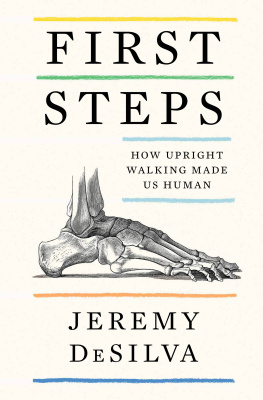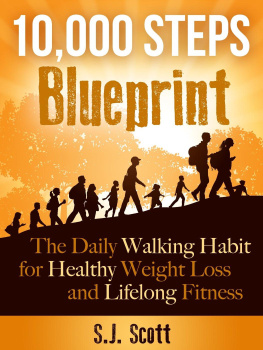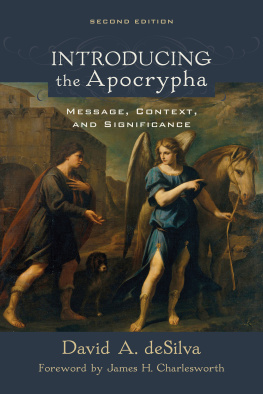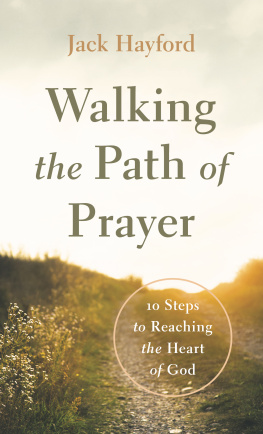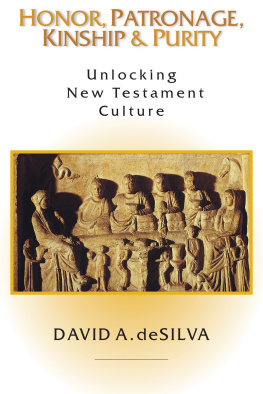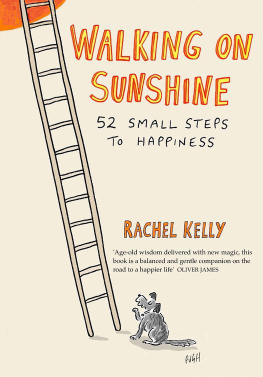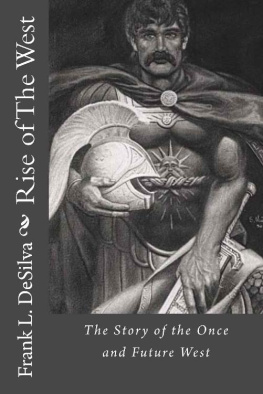Jeremy DeSilva - First Steps: How Upright Walking Made Us Human
Here you can read online Jeremy DeSilva - First Steps: How Upright Walking Made Us Human full text of the book (entire story) in english for free. Download pdf and epub, get meaning, cover and reviews about this ebook. year: 2021, publisher: Harper, genre: Romance novel. Description of the work, (preface) as well as reviews are available. Best literature library LitArk.com created for fans of good reading and offers a wide selection of genres:
Romance novel
Science fiction
Adventure
Detective
Science
History
Home and family
Prose
Art
Politics
Computer
Non-fiction
Religion
Business
Children
Humor
Choose a favorite category and find really read worthwhile books. Enjoy immersion in the world of imagination, feel the emotions of the characters or learn something new for yourself, make an fascinating discovery.
- Book:First Steps: How Upright Walking Made Us Human
- Author:
- Publisher:Harper
- Genre:
- Year:2021
- Rating:5 / 5
- Favourites:Add to favourites
- Your mark:
- 100
- 1
- 2
- 3
- 4
- 5
First Steps: How Upright Walking Made Us Human: summary, description and annotation
We offer to read an annotation, description, summary or preface (depends on what the author of the book "First Steps: How Upright Walking Made Us Human" wrote himself). If you haven't found the necessary information about the book — write in the comments, we will try to find it.
Jeremy DeSilva: author's other books
Who wrote First Steps: How Upright Walking Made Us Human? Find out the surname, the name of the author of the book and a list of all author's works by series.
First Steps: How Upright Walking Made Us Human — read online for free the complete book (whole text) full work
Below is the text of the book, divided by pages. System saving the place of the last page read, allows you to conveniently read the book "First Steps: How Upright Walking Made Us Human" online for free, without having to search again every time where you left off. Put a bookmark, and you can go to the page where you finished reading at any time.
Font size:
Interval:
Bookmark:
FIRST STEPS . Copyright 2021 by Jeremy DeSilva. All rights reserved under International and Pan-American Copyright Conventions. By payment of the required fees, you have been granted the nonexclusive, nontransferable right to access and read the text of this e-book on-screen. No part of this text may be reproduced, transmitted, downloaded, decompiled, reverse-engineered, or stored in or introduced into any information storage and retrieval system, in any form or by any means, whether electronic or mechanical, now known or hereafter invented, without the express written permission of HarperCollins e-books.
Cover design by Eric White
Cover illustration imageBROKER/Alamy Stock Photo
FIRST EDITION
Digital Edition APRIL 2021 ISBN: 978-0-06-293851-0
Version 02042021
Print ISBN: 978-0-06-293849-7
JEREMY D E SILVA is a paleoanthropologist at Dartmouth College. He is part of the research team that discovered and described two ancient members of the human family treeAustralopithecus sediba and Homo naledi. He has studied wild chimpanzees in Western Uganda and early human fossils in museums throughout Eastern and South Africa. From 1998 to 2003, he worked as an educator at the Boston Museum of Science. He continues to be passionate about science education and travels all over the world, giving lectures on human evolution. He and his wife, Erin, live in Norwich, Vermont, with their twins, Ben and Josie.
Discover great authors, exclusive offers, and more at hc.com.

Australia
HarperCollins Publishers Australia Pty. Ltd.
Level 13, 201 Elizabeth Street
Sydney, NSW 2000, Australia
www.harpercollins.com.au
Canada
HarperCollins Publishers Ltd
Bay Adelaide Centre, East Tower
22 Adelaide Street West, 41st Floor
Toronto, Ontario, M5H 4E3
www.harpercollins.ca
India
HarperCollins India
A 75, Sector 57
Noida
Uttar Pradesh 201 301
www.harpercollins.co.in
New Zealand
HarperCollins Publishers New Zealand
Unit D1, 63 Apollo Drive
Rosedale 0632
Auckland, New Zealand
www.harpercollins.co.nz
United Kingdom
HarperCollins Publishers Ltd.
1 London Bridge Street
London SE1 9GF, UK
www.harpercollins.co.uk
United States
HarperCollins Publishers Inc.
195 Broadway
New York, NY 10007
www.harpercollins.com
For Erin and the steps still to come
Paleoanthropologists have discovered and named over twenty-five different kinds of fossil human ancestors and extinct relatives (hominins). Throughout this book, you will meet many of thesepresented here by their names and representative fossils. While we know when these hominins lived in time (shown as Millions of Years Ago vertically), exactly how they were related to one another remains unclear. Possible relationships are proposed by this tree, though recent fossil and genetic evidence has revealed parts of the human family tree to be an entangled snarl of interconnected branches. Future discoveries are certain, in some ways, to complicate this picture and, in other ways, to simplify it.

As I write this from my home in Norwich, Vermont, a social media poll is circulating in which people report what career they have now compared to what they dreamed of doing at ages six, ten, fourteen, sixteen, and eighteen. Mine looks like this:
| Age 6 | Scientist |
| Age 10 | Center fielder for the Red Sox |
| Age 14 | Point guard for the Celtics |
| Age 16 | Veterinarian |
| Age 18 | Astronomer |
| Now | Paleoanthropologist |
Paleoanthropology is the study of fossil (paleo) humans (anthropology). It is a science that asks some of the biggest and boldest questions humans have ever dared wonder about themselves and their world: Why are we here? Why are we the way we are? Where did we come from? But it was not always my path. I didnt even discover this science until the year 2000.
That year, I was working as a science educator at the Boston Museum of Science. I was making $11 an hour, George W. Bush was elected the next U.S. president, and the Red Sox had wrapped up their eighty-second season since last winning a World Series championship. My museum coworker was a brilliant science educator with the best and most contagious laugh I had ever heard. Four years later, she said yes when I asked her to marry me.
In late 2000, however, it was not love on my mind, but a terrible gaffe in the halls of the museum. Positioned within the walls of the dinosaur exhibit, way too close to the life-size Tyrannosaurus rex, was a fiberglass replica of footprints made by ancient humans 3.6 million years ago at Laetoli, Tanzania.
Like the prehistoric animal toy sets that include dinosaurs, woolly mammoths, and cavemen, positioning these footprints next to dinosaur fossils that were twenty times older might unwittingly promote the misconception that ancient humans and dinosaurs coexisted. Something had to be done.
I approached my bossthe great science educator Lucy Kirshnerand she agreed that the ancient human footprints should be displayed in the newly rebuilt human biology exhibit. But first she wanted me to go to the museum library and learn all I could about the Laetoli footprints and about human evolution. I devoured books on the subject and soon I was hooked. I had, as they say, caught the hominin bug. Hominins are what we call extinct human relatives and ancestors. The timing could not have been better. In the following two years, the oldest members of the human family tree were discoveredmysterious apelike ancestors with names like Ardipithecus, Orrorin, and Sahelanthropus.
In July 2002, I stood on a presentation stage at the museum with Dr. Laura MacLatchy, then a paleoanthropologist at Boston University (BU), and discussed with a fascinated public the implications of a newly discovered 7-million-year-old hominin skull in Chad, Africa. I was giddy. Here was a real paleoanthropologist talking with me about the oldest human fossil ever found.
To me, hominin fossils didnt just reveal the physical evidence for our human evolutionary history; they also contained extraordinary, personal stories of past lives. The footprints at Laetoli, for example, were a snapshot in the life of upright walking, breathing, thinking beings who laughed, cried, lived, and died. I wanted to learn how scientists squeeze information out of these ancient bones. I wanted to tell evidence-based stories about our ancestors. I wanted to be a paleoanthropologist. Just over a year after standing with Laura MacLatchy on the museum stage, I started graduate school in her paleoanthropology lab at BU and, a short time later, the University of Michigan.
Today, I teach in the anthropology department at Dartmouth College in the woods of New Hampshire and travel to Africa for my research. For nearly two decades, I have searched for fossils in caves in South Africa and throughout the ancient badlands of Uganda and Kenya. I have dug through the ancient volcanic ash at Laetoli, Tanzania, searching for more footprints made millions of years ago by our upright walking ancestors. I have followed wild chimpanzees through their jungle habitat. In African museums, I have closely examined the foot and leg fossils of extinct human relatives and ancestors. And Ive wondered.
Font size:
Interval:
Bookmark:
Similar books «First Steps: How Upright Walking Made Us Human»
Look at similar books to First Steps: How Upright Walking Made Us Human. We have selected literature similar in name and meaning in the hope of providing readers with more options to find new, interesting, not yet read works.
Discussion, reviews of the book First Steps: How Upright Walking Made Us Human and just readers' own opinions. Leave your comments, write what you think about the work, its meaning or the main characters. Specify what exactly you liked and what you didn't like, and why you think so.

